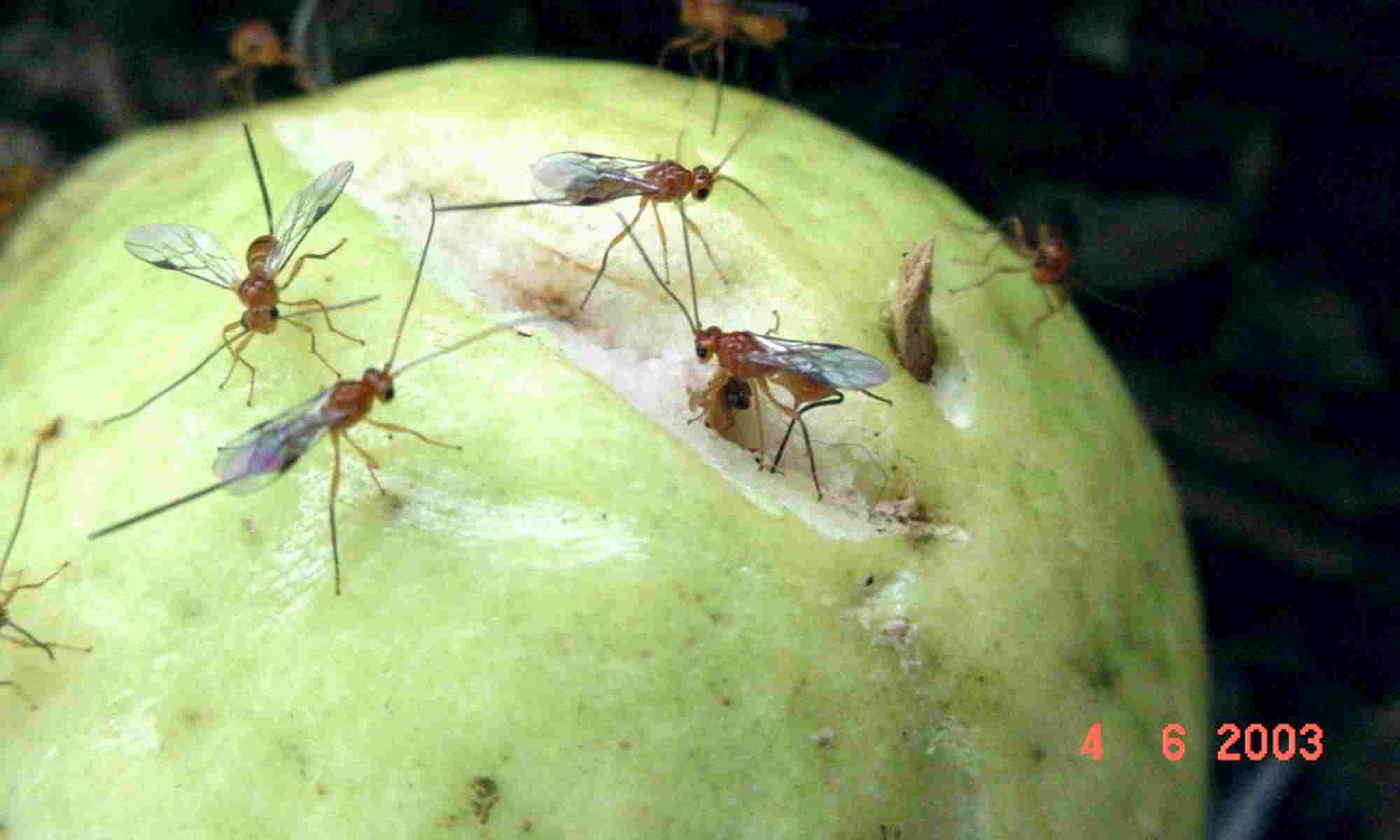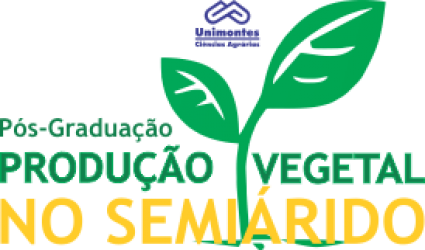- Version
- Download 11
- File Size 660.80 KB
- Create Date 11/06/2021
- Download
SANTOS, Bruna Hanielle Carneiro dos. Combinação de rizobactérias e doses de nitrogênio no controle de Meloidogyne javanica em feijoeiro. 2014. 33 p. Dissertação (Mestrado em Produção Vegetal no Semiárido) – Universidade Estadual de Montes Claros, Janaúba, 2014.
A cultura do feijão tem grande importância socioeconômica no Brasil e sua produtividade é limitada, dentre outros fatores, ao parasitismo de nematoides do gênero Meloidogyne. Táticas alternativas de controle vêm sendo pesquisadas e destas merecem destaque a utilização de rizobactérias e de adubação nitrogenada. As rizobactérias, além de controlarem patógenos, também estão envolvidas na promoção de crescimento de plantas, a exemplo da capacidade de fixarem nitrogênio atmosférico. O trabalho objetivou avaliar a combinação de rizobactérias e doses de nitrogênio no controle de Meloidogyne javanica em feijoeiro. O estudo foi conduzido em casa de vegetação da Unimontes - campus Janaúba. Os tratamentos foram dispostos em delineamento em blocos ao acaso, em arranjo fatorial de 5 x 5 + 1, sendo cinco doses de N (0, 25, 50, 100 e 200 kg.ha-1) e cinco isolados: Bacillus pumilus-1, Bacillus subtilis-34, Bacillus sp.-36, Bacillus pumilus-60 e Bacillus pumilus-76 + 1 testemunha (sementes não inoculadas, cultivadas em solo infestado com M. javanica sem nitrogênio). Plantas de feijoeiro, provenientes de sementes microbiolizadas com os isolados e mantidas em vaso com solo esterilizado, foram inoculadas com 3.000 ovos de M. javanica. Decorridos 60 dias da inoculação, foram avaliadas as características vegetativas do feijoeiro e as nematológicas. Houve interação significativa entre os isolados x doses de ureia. Em cada combinação, as maiores reduções do número de massas de ovos em relação à testemunha foram de 54,68%, 62,50%, 66,8%, 84,6% e 83,17% para os tratamentos Bacillus B. pumillus -60 na dose 0, B. subtilis-34 na dose de 25 kg.ha-1, B. pumillus-1 na dose 50 kg. ha-1, B. subtilis-34 na dose de 100 kg.ha-1 e B. pumillus-1 na dose de 200 kg.ha-1, respectivamente. Para a variável número de galhas, as maiores reduções foram de 57,0% para B. pumillus-60 na dose 0 e 69,04% para Bacillus sp.-36 na dose de 25 kg.ha-1. Para os isolados B. pumilus-1, Bacillus sp.-36 e B. pumilus-76, houve uma redução linear do número de massas de ovos e de galhas em resposta ao aumento das doses de nitrogênio. A inoculação das sementes com isolados de Bacillus spp. associada à adubação nitrogenada contribui com a redução de massas de ovos e galhas de M. javanica em raiz de feijoeiro. Na dose 0, os isolados B. pumillus-60 e B. pumillus-76 reduziram o número de massas de ovos e de galhas na ausência de ureia indicando efeito nematicida. Não houve efeito dos tratamentos sobre J2 e ovos e características vegetativas.
Palavras-chave: controle biológico, ureia, nematoide das galhas, Phaseolus vulgaris, Bacillus spp.
Rhizobacteria combination and doses of nitrogen in the Meloidogyne javanica control on bean plant
The bean crop has great socio-economic importance in Brazil and its production is limited, among other factors, the parasitism of nematodes of the Meloidogyne genre. Tactical control alternatives have been researched and these deserve mention the use of rhizobacteria and nitrogen fertilization. The rhizobacterias, besides control pathogen, they are also involved in the promoting of the plant growth, such as the ability to fix atmospheric nitrogen. The study aimed to evaluate Rhizobacteria Combination and doses of nitrogen in the Meloidogyne javanica control on bean plant. The study was conducted in a greenhouse at Unimontes - Janaúba campus. The treatments were arranged in randomized blocks, in factorial arrangement 5 x 5 + 1, with five doses of N (0, 25, 50, 100 e 200 kg.ha-1) and five isolates: Bacillus pumilus-1, Bacillus subtilis-34, Bacillus sp.-36, Bacillus pumilus-60 e Bacillus pumilus-76 + 1 control (non-inoculated seeds, cultivated in infested soil with M. javanica without nitrogen). Bean plants, derived from microbiolized seeds with the isolated and maintained in pots with sterilized soil were inoculated with 3,000 eggs of M. javanica. After 60 days of the inoculation were evaluated the vegetative characteristics of the bean plant and the nematodes. It was significant interaction between the isolated x doses of urea. In each combination, the greatest reductions in the number of egg masses in relation to the control were 54,68%, 62,50%, 66,8%, 84,6% e 83,17% for the treatments Bacillus pumillus-60 on the 0 dose, B. subtilis-34 on the 25 kg.ha-1 dose, B. pumillus-1 on the 50 kg. ha-1 dose, B. subtilis-34 on the 100 kg.ha-1 dose and B. pumillus-1on the 200 kg.ha-1 dose, respectively. For a variable number of galls, the greatest reductions were 57,0% for B. pumillus-60 on the 0 dose and 69,04% for Bacillus sp.-36 on the 25 kg.ha-1 dose. For the isolates B. pumilus-1, Bacillus sp.-36 and B. pumilus-76, there was a linear reduction in the number of egg masses and galls in response to increasing doses of nitrogen. The seed inoculation with isolates of Bacillus spp. associated to nitrogen fertilization contributes to the reduction of egg masses and galls M. javanica in the bean plant root. At 0 dose, the isolates B. pumillus-60 and B. pumillus-76 reduced the number of egg masses and galls in the absence of urea indicating nematicide effect. There was no effect of the treatments on J2 and eggs and vegetative characteristics.
Keywords: biological control, urea, root-knot-nematode, Phaseolus vulgaris, Bacillus spp.

